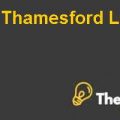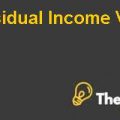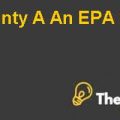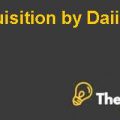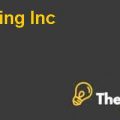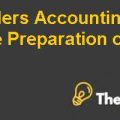Analysis of the firm’s financial statements and supplementary information.
Introduction
Target Company’s financial analysis is based on company’s own financials, notes to the account, common size financials and key financial ratios.
Target sales is composed of two divisions; one is sales from discount stores while another source of sales is revenue from credit card. The majority of sales is generated from discount stores. From year 2006 to 2008,according to the percentage of sales, the sales from discount stores shares were 97% while 3% sales revenue was generated from revenue of credit card.
Income Statement
In the common size analysis, each account is expressed as a percentage in the value of total sales in income statement while in the balance sheet, as a value of total assets. Common-size analysis is often useful in analysis time series data as in the case of Target in which data is given from year 2006 to 2008.
Further, common size income statement analyzes that cost of goods sold is stable at 66% which can be interpreted that cost of cost sold in the discount stores has not increased so far in terms of price. COGS is decreasing possibly due to bulk buying by the Target Corporation as number of retail stores increases.
Selling, General and Administrative expenses have also slightly increased as compared to sales possible due to the increase in number of stores or it can be assumed due to sales growth, Target has increased number of employees to manage the growth in sales.
Interest expense has remained stable around at 1% as compared to sales which indicates that Target is adjusting its long-term and short-term loan around 1% of sales to support its growing activities. Tax is also around 2.8% to total sales and there is slight decrease from last year due to accounting adjustment because the accounting tax and actual tax paid will differ.
Balance Sheet
Balance sheet is a snapshot of financial standing of the company. In absolute terms, total cash and short-term investments have increased from year 2007, total current assets also increased from $14,706 to $18,906. Property, Plant and Equipment net of depreciation also increased net of deprecation by $4200. All the assets have been increased from the previous year. Current, non-current and equity side have also increased as well.
Common Size balance sheet analysis depicts that cash and cash equivalents have increased from 2.2% of total assets in year 2007 to 5.5% in year 2008. Accounts receivable has increased from 16.6% to 18.1% and the reason for increase in accounts receivable is mentioned in notes to accounts 9 Accounts Receivable in which the company is writing off debt to Target company’s own credit card services. Customers often use the Target’s credit card and defaults it, thus increasing accounts receivables.
Inventory has slightly decreased as compared to total assets from 16.7% to 15.2% as the company wants to stockless in its inventory. As a retail discount stores, inventory is a major part of Target Company, and its management is important.
Property, Plant, and Equipment have decreased as the company’s total assets decreased than increased. As compared to total assets, PPE was 76% in 2007 which in the current year is 71.8%. Despite the investment of$4369 the ratio is not maintained because Target focused on its inventory rather than its fixed asset, as in retail business inventory is more valuable and majority of investment is made in inventory and warehouse where inventory is stocked.
Accounts payable has been decreased as compared to total liabilities and stockholder equity from 17.6% in last year to 15.1% in current year, due to consideration received from suppliers such as on volumes rebates, mark down allowance and promotional programs. Early payment is also an option given by the supplier to avail discount.
Long-term debt has been increased to incorporate an element of debt and keep investment up in line with increased sales and growth. Debt is an inexpensive source of finance and tax deductible as compare to equity investment.
Cash Flow Analysis
Target is earning positive cash flow from its operation which is a positive sign as the company can generate cash from operations to support their activities. In 2008, the cash provided by operations was $4,125 Million, which is less than the previous year that was $4862 Million.
Target Corporation Case Solution
Target was able to fund cash in purchase of plant, property and equipment and change in accounts receivables and was able to invest in other investments.Net Target was raised$500 million from notes and $6291 from long-term borrowings which will be used in financing different activities. In the year 2008, there was total inflow of $13047 Million while there was total outflow of $11079 Million which resulted in net increase...............
This is just a sample partial work. Please place the order on the website to get your own originally done Case Solution

